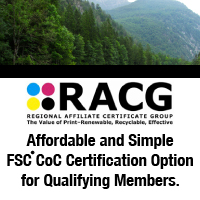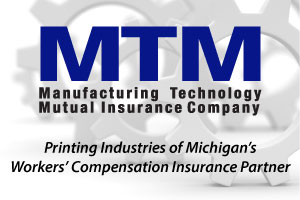
How to Identify Those Hard-to-Find Decision Makers
By Joe Rickard

Knowing who will make the decision to buy printing products and services is a key step in any sales process. Countless hours in sales time and frustration can be saved by quickly sizing up an account and learning how buying decisions are made. Though there is no magic formula, there are some simple steps salespeople can take to ensure they are working with the right people and not wasting valuable time.
Determining the decision process starts with learning who has the authority to make the final decision, who is a driving force and who will actually execute the proposed offering. Though the decision process varies from company to company, the buying of print always starts with a problem. The bigger the problem the more people will be involved in the decision.
Categories of Decision Makers
Sorting through the multitude of potential players who affect the decision process takes time and skill. The decision process for print-related offerings can be organized around five general categories. For many large sales, each of these categories of customers will need to be engaged. For smaller accounts, these categories of decision makers are often combined.
- Tire Kickers and General Time Wasters: These are the folks that can’t make or won’t make a meaningful buying decision. It is best to identify these people and politely avoid them.
- Influencers: There are plenty of potential influencers around decision makers. Recognizing who has influence and then gaining their support will minimize wrong sales steps. Most buying decisions will have multiple influencers.
- Champions and Mobilizers: These are folks that are vital. Without an influential person who supports you and your offering, there will not be a sale.
- End Users: For every decision, there is someone in the organization who actually implements and manages projects. Never overlook this role in the decision process. They may not be able to say“yes”but can certainly say“no”to a proposed solution.
- Decision Makers: Finally, there are individuals or groups of individuals who actually have the final operational and financial decision-making authority. Depending on the type and size of offering, they can be senior executives, middle managers or end users.
- Gatekeepers: Additionally, often there is a gatekeeper to contend with. A gatekeeper is a person who permits salespeople to talk to decision makers or influencers.
Multiple Decision-Making Processes in the Same Account
We recently worked with a large retailer to help them construct a company-wide Request for Proposal (RFP) for printing products and services. The company uses multiple printers for a variety of work. We counted at least four different decision processes based on what was being bought. For instance, in one case, a print buyer was responsible for the purchase of a substantial set of defined printing products that included point of sale, price books and promotional materials. In another, the customer bought direct mail services where the decision came from the marketing communications department.
Here are three ways to gain insights on how decisions are made:
1. Customers, Colleagues, Friends, and Family
When an opportunity presents itself, determine anyone who is or has been connected with this account. This takes creativity and a little time. Being able to reference another person to a targeted customer contact opens doors and enables the gathering of critical information to guide the sales process. Printing is still a relationship business.
In existing accounts, salespeople must relentlessly expand personal contacts and relationships. Incumbent salespeople always have the advantage in knowing how decisions are being made. Over time, it becomes apparent who are those champions or mobilizers who can help guide and drive sales efforts.
2. Social and Personal Networking
If there are no relationships at the targeted account, networking into the decision circle is the best approach. Using Linkedin and other networking channels to ask for help to gain access to decision makers is a good approach.
Take time to research each name provided by networking contacts to ensure you have the right messages, interesting opening statements and insights to share when you make contact. Having a name for a reference and specific knowledge into the customer’s business can help get through to busy decision makers.
3. The Last Resort
When all else fails, the cold call is the last option. Though it is the least productive in selling complex printing products and services, cold calling may be the only way to get into an account. We recommend being straight- forward and direct. Simply asking who is responsible for making decisions on direct mail or marketing communications is a good place to start.
Joining groups online and industry associations is also a good way to find contact names and insights into a customer’s business. This is a good way to move a very cold call to a warmer one.
Before moving through any sales process or forecasting deals, it is a good practice to ensure that the decision process is clearly understood. Failure often results in wasted time and effort. The chances of consistently being successful selling high relationship offerings associated with printing are greatly enhanced by simply knowing who are actually making the decisions.
About the Author: Joe Rickard is the founder of Intellective Solutions. Intellective Solutions (www.intellectives.com) works with printing and technology organizations to improve their sales, marketing and operational effectiveness. Joe can be reached at 845 753 6156. Follow him on Twitter @joe.rickardis.



 The CRM as the central repository of your customer interaction data becomes the most critical system in your organization allowing your company to be systematic in its interactions with customers. Managers must insist that members of their team stop utilizing their own way of organizing this data, even if this approach has worked for years, but utilize a CRM to make customer-specific information systematically organized and widely available to the team.
The CRM as the central repository of your customer interaction data becomes the most critical system in your organization allowing your company to be systematic in its interactions with customers. Managers must insist that members of their team stop utilizing their own way of organizing this data, even if this approach has worked for years, but utilize a CRM to make customer-specific information systematically organized and widely available to the team.





 While taking a closer look at the components of Break-Even, we determine that our Variable Costs seem to be about 3% higher than the Variable Costs of Profit Leaders. If we can control those costs, will we break-even? Three percent (3%) seems like a small amount, but as a % of sales it adds up. To bring Variable Sales down to 41% of sales, here’s the equation:
While taking a closer look at the components of Break-Even, we determine that our Variable Costs seem to be about 3% higher than the Variable Costs of Profit Leaders. If we can control those costs, will we break-even? Three percent (3%) seems like a small amount, but as a % of sales it adds up. To bring Variable Sales down to 41% of sales, here’s the equation:






